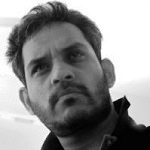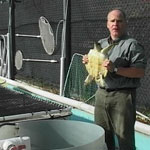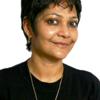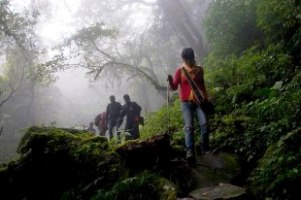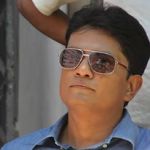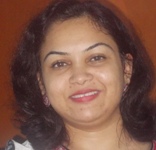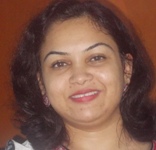Though I grew up in Bombay and would only meet my family in Kolkata about once a year (on occasions even once in two years) during school vacations, I was by no means “out of touch” with my family. I would like to clear the air about this right at the onset because many believe that “A Village In Bengal: Photographs and an Essay”, my recently released book, was a result of me wanting to trace back my roots. The truth, is far from that.
When I did my first pictures in Amadpur, I had no notion of developing this work as a book, so much so that I didn’t even realise that one little village might even engage me for more than a decade and then mature into a body of work. As my interest grew in all matters to do with photography my library at home grew steadily as well. The books at home were, largely, the works of some of the masters of the medium, towering figures who inspired me, or books about them and against such formidable namesit seemed rather arrogant that I could have a book with my name on the cover so early in my career. It was like a forbidden thought and one so distant and outlandish that such a thing, honestly, never even occurred to me. That thought came gradually and I took the steps quite tentatively as I started visiting Amadpur every year and slowly discovered that my affection for the place and members of my family with whom I was slowly developing new bonds with were far deeper than what I could possibly express through a collection of randomly shot single images.
I first visited Amadpur as a 16-year old, during Durga Puja, just a few months after finishing my Standard 10examinations – an age when I was more interested in playing cricket with my cousins than exploring the village, though I did go out with them to the small market to buy fishing rods, I didn’t look around enough and nothing, by way of impressions of the place really stayed with me. By the time I returned, after a gap of a few years, I was a photographer and “looking” was what I did. I was “seeing” Amadpur for the first time and Amadpur was exotic, to put it mildly – things like the paddy fields, the ponds, the fishermen hauling in their catch, the bamboo groves, our Thakur-dalan, the Durga Pujo at home, my uncles and aunts in their dhotis and silk saris, new clothes bought on the occasion of the festival – all became potential subjects of photographs. I shot pictures and on my return to Bombay would show them to friends.
This happened for the next two years and people started to say that the pictures reminded them of Satyajit Ray’s Pather Panchali, a film I had watched once before and had got rather bored watching. But these comparisons secretly thrilled me enough to hunt down a VCD and watch it again. And again. And then many more times. Slowly I began to appreciate the film and this led me to Ray’s other films and later the works of Hitchcock and Kurosawa, tow film-makers I grew to admire greatly. My interest in cinema was now slowly beginning to broaden beyond the Hollywood pulp that I was used to watching till then. Ray and Hitchcock’s articulation of process got me interested in aspects of editing a film and this coincided at a time when I was beginning to have my first thoughts of developing this work further, perhaps, into a book. And here was the first of many problems – I didn’t know how to do a book. There weren’t many people that one could approach either for guidance and the books in my library weren’t of much help either. I wasn’t quite able to find the right idiom for this work. And then one year, as I sat by the banks of the dighi behind our house, away from all the fun at home, I saw a tiny fish leap out of the waters and dive back in making a plop sound.
This might seem an unremarkable incident but I had never before been so aware of a delicate sound such as this especially since our hearing, growing up in noisy cities, doesn’t allow us such small pleasures. All of a sudden my awareness of the silence around me seemed to become more heightened. This silence was something that has really been the defining character of the place for me, but an aspect that I had never realised till that moment. The silence, I realised, had to now be accommodated as a character in my story. I had quite by chance hit upon the photographic approach I was looking for. I decided that Amadpur didn’t need flamboyance as far as photography was concerned. On the contrary it needed a certain ordinariness, both in style and approach. And so a beginning was made.
From then onwards, it was really a brick-by-brick building of the narrative. I had always felt that putting together a photo-essay was very similar to putting together a film. In many ways it is also an exercise in logic, proceeding step by step, debating each picture that might be appropriate, its framing, its content and how it links up with the images before and the ones that follow thereby stitching together a narrative which is “dramatic”.
It continued this way for years, as new ideas emerged as per the planned or sometimes, serendipitous education that was gained during the 360 days in the year when I studied the photographs and toyed with the design, old ideas were discarded or demolished – often, first on paper and an excel sheet that acted as my “story-board” since I was too lazy to draw so often – a sort of homework you could say, for the 5 days I would shoot each year. Each idea was plotted, sometimes moved about on the excel sheet, notations were added to existing pictures that had to be further refined, if possible, or new pictures that had to be shot to be inserted into the layouts to see if they worked as well as I had previously imagined. The whole exercise became somewhat like playing with a kaleidoscope – every little bit of tinkering meant a newer possibility. Not necessarily a good one but one to be considered nonetheless. And so it went on this way…for 14 long years…
So, what started out as a series of holiday snapshots grew into an exploration of trying to understand how to create a photographic narrative. Since this project has run almost parallel to my nearly twenty year career, an education too was gathered along the way as I went on to discover and then incorporate many of the ideas that have shaped my photography practice.
Find us on facebook: facebook.com/TheThumbPrintMag

